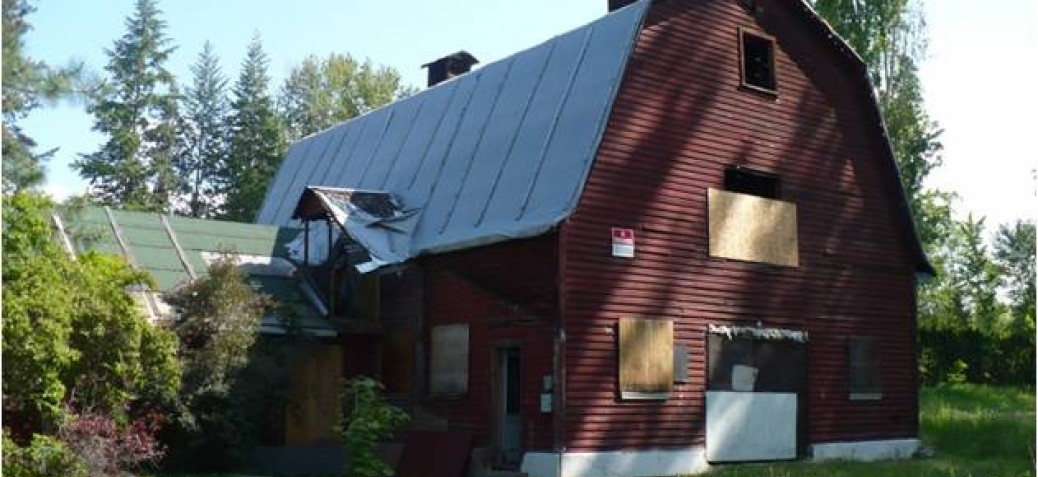Surtees Barn
Place Description
The historic place is the rural, 2 storey gambrel rafted barn, built around 1927 at 4639 Lakeshore Road, in Kelowna's Mission Sector. The barn is closely associated to the Surtees House on the same property
Heritage Value
The dairy barn, one of the most up-to-date in the district when it was built, for many years housed a prize-winning dairy operation, and later provided studio space for several important local artists.
After the end of the First World War, about 1919, the house and property were bought by Allen V. Surtees, a young Englishman from a well-off family, who in 1924 courted and married Ishbel Marjoribanks of Coldstream.
Ishbel Surtees later inherited two small fortunes. The first helped to build the Surtees' 'Greenways' dairy barn in 1927. It was reportedly the finest barn in the district, with double walls, draft-free windows, and hay chutes, and it was the first in Okanagan Mission to have electricity. Surtees imported dairy cattle from the Channel Islands, and Mr. and Mrs. T. Apsey, who had come from Scotland to work for the Aberdeens at Coldstream in 1910, moved here to work at Greenways. The local riding club, formed in 1931, used the upstairs of the barn for its dances. Ishbel Surtees died just before the Second World War and Allan Surtees sold the house and dairy farm before joining the services to fight in the war.
In the early 1960’s the property was bought by Allen Surtees' son John, who had been born there. He met and married his wife Ursula in England, and in 1946 she came out with their infant daughter on the Queen Mary to rejoin him, one of thousands of 'war brides'. With the dairy farm no longer in operation, John Surtees rented out the barn to local artists. Two well-known potters, Walter Dexter and Bob Kingsmill, had studios in the lower part, while the hayloft was used as a studio by painters Gwen Lamont and Don Li-Leger. For a number of years the barn also housed Jester's Antiques, operated by Barbara Keller, widow of the highest-ranking officer Kelowna has produced, Major-General Rodney Keller, CBE, and commander-in-chief of the 2nd Canadian Division during WWII.
The barn has been altered on a number of occasions since its construction. Externally these changes are relatively minor and involve the addition and/or removal of doors and windows, and the replacement of the original wood shingle roof. Internally walls have been constructed, plumbing and electrical services installed to facilitate its use as an Artist Studio during the 1960’s.
Similar to the Surtees House, the barn is currently owned by the City, vacant, and boarded up.
Character Defining Elements
Key elements that define the heritage character of the Surtees Barn include:
-1927 vernacular 2-level gambrel rafted wood frame barn and rural character
-Internally braced gambrel rafters
-“T”-shaped plan with gabled roofed wing with full basement below
-Flared eaves on barn
-2 square gabled ridge ventilators
-Property is City-owned and at the beginning of a linear park




